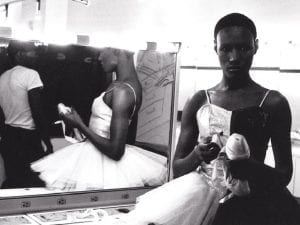The second edition of PHOTOFAIRS San Francisco brings together a diverse range of practitioners that investigate landscapes and subject matter from a multitude of perspectives. Maroesjka Lavigne (b. 1989) records remote corners of the earth. Land of Nothingness – a series which possesses a similar uncanny quality – captures the sublime topography of Namibia, one of the least populated regions in the world.
A: Your work covers themes of beauty, identity and varying landscapes, often drawing on a minimalistic, muted colour scheme. What can we expect to see from you during the San Francisco Photo Fair?
ML: There will be a piece of my new work at the fair. In a way, it’s an extension of my previous work. I’m still looking for a specific type of landscape, but this series specifically focuses on the colour, shape and the overall tactility and texture of the land.
A: How do you select your subject matter?
ML: For me, it’s important to do something I love and where I am keen to learn more about. Since I’ve started with photography I’ve been on a quest to learn more and more about landscape and the different layers it contains. At the moment, my focus is on the details of these layers. The search to a new subject has always come naturally. Whilst working on a specific project certain questions and ideas arise and some of them stick. Most of my work result out of questions.
A: Who or what are you influenced by?
ML: I’m mostly influenced by nature, whilst travelling you get to see a lot of new elements you might have never seen before and this brings you to a whole new spectrum of interesting aspects to discover. You can go on forever. I also follow my fellow photographers. In my close environment, there are a lot of photographers always busy searching for new projects and working hard. It’s very interesting to see how other people handle these same subjects.
A: How do you think photography is changing, and are there any new methods that you’re using?
ML: It’s very interesting to see how different media are intertwining. Photography can be combined with painting, sculpture or even weaving! This play with the boundaries of photography or rather the lack of boundaries is fascinating. This can be applied in a very tactile manner, like the camera-less process of Claire A Warden’s MIMESIS or you can play with the scale and dimensions distracting the viewer of the two dimensional aspect of photography. Another interesting trend is the line between documentary and staged photography. Is there such a thing as ‘the truth’ in photography and how do we challenge the viewer to be critical about this? Max Pinckers’s work ‘Margins of excess’)
A: What future projects do you have lined up?
ML: At the moment, I’m making a book of my work with Radius Books. This book will be launched together with the exhibition of my new work at the Robert Mann Gallery this autumn. It’s an ideal time to contemplate what I’ve been doing so far and how I will proceed. Overlooking my past projects, I can now see a very clear line in my approach to photography and landscape in particular. t started out with a focus on the vastness of certain landscapes moving more towards a focus on the details and a game of scale. I’m sure these subjects will keep evolving.
The artist will be presented at PHOTOFAIRS | San Francisco by Robert Mann Gallery (New York), PHOTOFAIRS | San Francisco – 22-25 February at Fort Mason Center, San Francisco. Find out more.
Credits:
1. Maroesjka Lavigne, Purple House, Namibia , 2015. From the series: Land of Nothingness. © Maroesjka Lavigne, courtesy Robert Mann Gallery.





